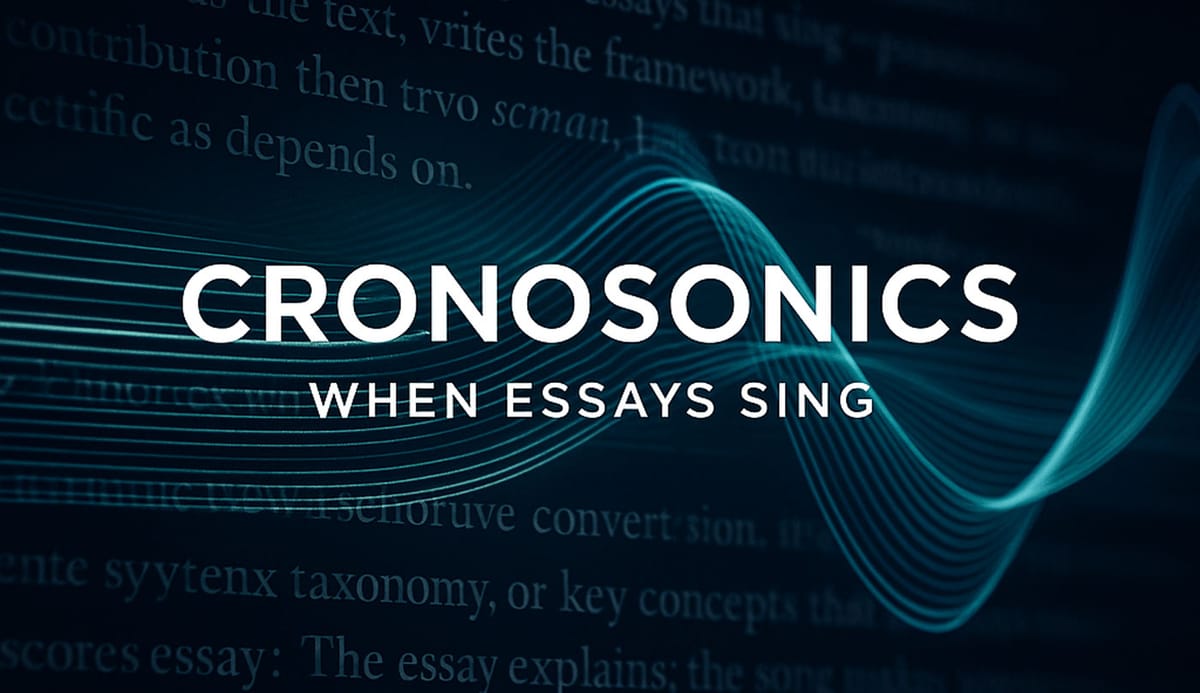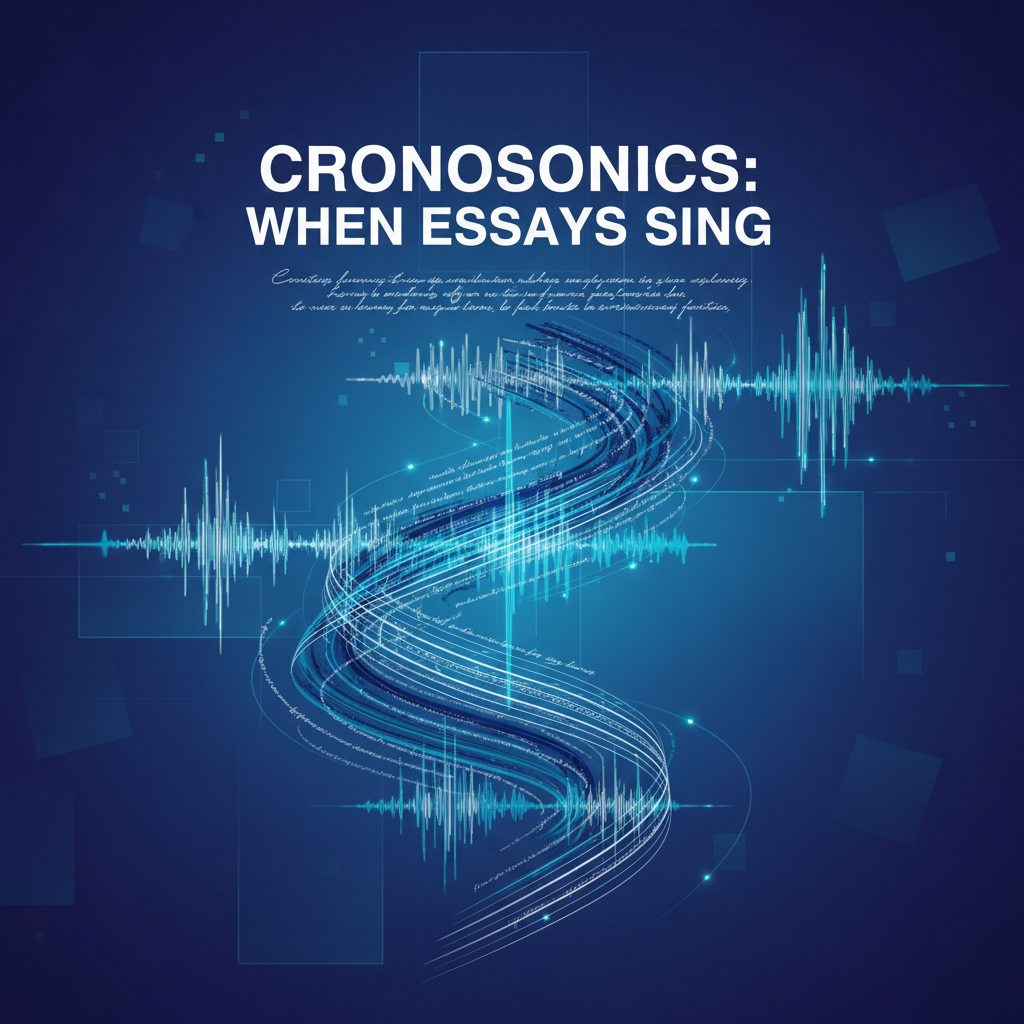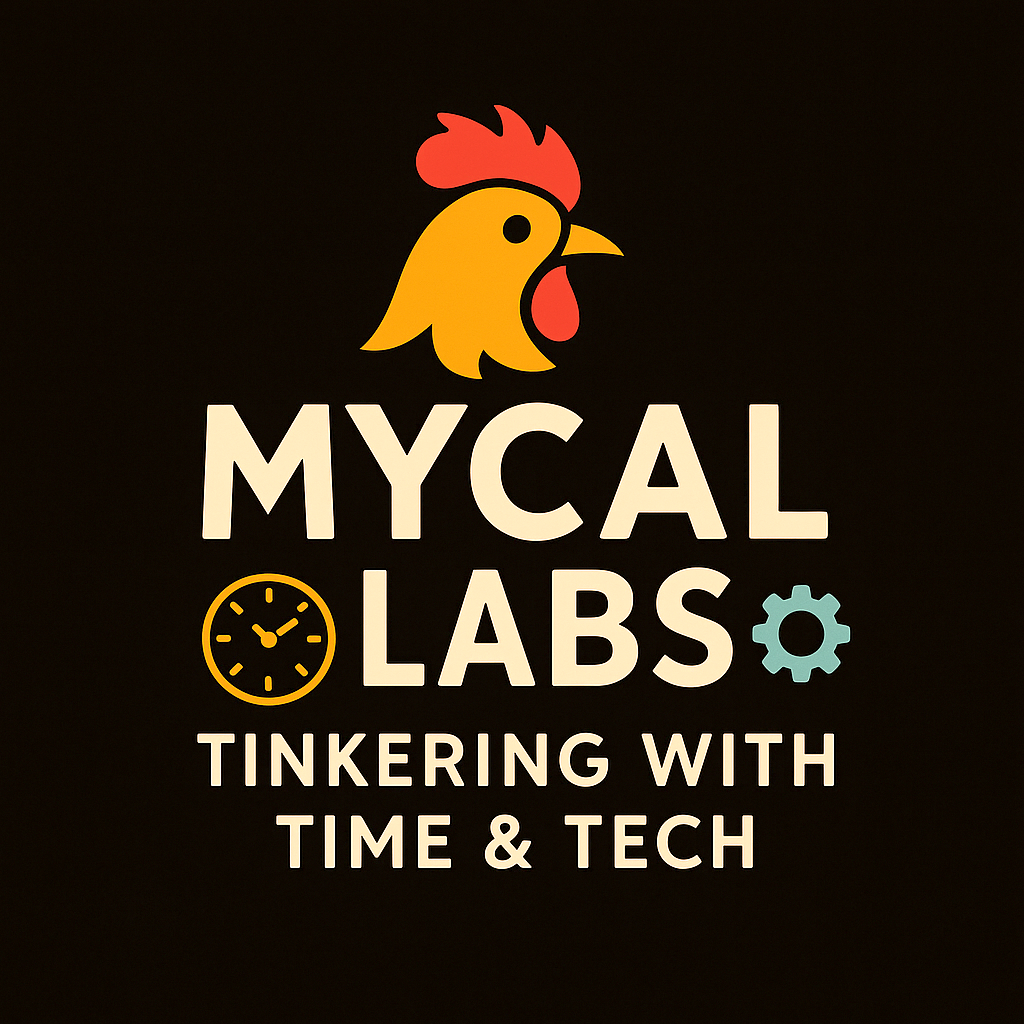Cronosonics: When Essays Sing
You may have noticed the audio clips on my blog posts. They’re not background music — they’re cronosonics: essays that sing. Here’s the origin story, why it works, and a challenge to try it yourself.

Tinkering with Time, Tech, and Culture #17

Introduction
You may have noticed the audio clips attached to many of my blog posts. They’re not random experiments, and they’re not background music. This is the post where I explain what they are — and why I’ve been making them.
The Accidental Discovery
I didn’t set out to invent a new format. I wrote an essay, then — for reasons I can’t fully explain — I turned the core ideas into a song.
Not a polished single, not something aimed at radio play. Just a rough little track spun up with AI tools, lyrics pulled from the framework I’d just been writing about. I hit publish with both the essay and the song and assumed it was a quirky experiment, a one-time joke at my own expense.
Then the messages started coming back.
People weren’t just quoting the essay. They were quoting the lyrics. They were humming the chorus. One reader told me the refrain looped in their head while they were coding, and somehow it helped them think through a problem. Another said the song made the concepts “click” in a way the prose alone hadn’t.
That was the moment I realized I’d stumbled onto something bigger than a one-off. Accidentally, I’d invented a new format.
What a Cronosonic Is
I call them cronosonics. The name comes from two Greek roots: chronos (time — the persistence of an idea) and sonus (sound — the musical layer). I dropped the “h” for a cleaner, punchier spelling — crono — something that feels more rhythmic, more in flow with the format itself.
Think of them as essays that sing — written pieces paired with companion songs designed to distill, reinforce, and carry the ideas past the page.
The workflow is simple but intentional:
- Essay first. Analysis drives everything. Without the essay, there’s no skeleton to hang a song on.
- Distill the core. Identify the framework, taxonomy, or key concepts that matter most.
- Turn it into lyrics. Verses and choruses force compression. If the concept is fuzzy, it won’t scan.
- Match the tone. Serious essay? Go atmospheric. Sardonic piece? Add edge.
- Release them together. The essay explains; the song reinforces. They’re not two artifacts — they’re one.
That’s the essence: the essay explains, the song makes you remember.
Why It Works
This isn’t magic. It’s mechanics.
- Dual encoding. Prose hits the linear, analytical pathways. Music hits the emotional, rhythmic, and mnemonic ones. Together, they form a braid.
- Mnemonics. You forget bullet points. You don’t forget choruses. Melodies stick where outlines fade.
- Creative constraint. Turning a paragraph into a couplet forces clarity. If I can’t compress an idea into a verse, that’s a red flag: the essay itself isn’t sharp enough yet.
- Emotional resonance. An essay can describe a framework. A song can communicate my attitude about it. Those tones of irony, humor, or conviction that prose sometimes buries? They surface in a melody.
And here’s the twist: with AI music tools, this is sustainable. You don’t need to be a trained musician to experiment. I’m not composing symphonies. I’m using tools that democratize sound the way word processors democratized text. That lowers the barrier enough that cronosonics can move from gimmick to practice.
A Concrete Example
Here’s how it looks in practice.
I wrote an essay on AI agent autonomy where I outlined a simple three-tier framework:
- Lackey: runs for an hour under supervision.
- Flunky: lasts a day, needs periodic correction.
- Minion: goes for weeks, mostly independent.
In prose, it’s clear enough. But when I turned it into a song, the framework locked into memory:
Lackey, Flunky, Minion — the chain of command
Levels of autonomy, across the shifting sand
The rhythm does something prose can’t. It makes the hierarchy memorable, almost chant-like. And the tone — slightly sardonic, a little tongue-in-cheek — smuggles in my attitude toward the current state of AI agents. The essay explains; the song leaves you humming.
That’s the pattern I’ve seen again and again. The essay tells you what the framework is. The cronosonic helps you keep it.
Is This Gimmicky?
Sure. Maybe. New formats always are.
Hypertext links were once dismissed as gimmicks. Podcasts were “just internet radio” until suddenly they weren’t. Every medium that breaks the mold feels strange at first. Cronosonics are no different.
But here’s the thing: not every essay needs a song. That would be exhausting. But some essays work dramatically better with one — especially frameworks, taxonomies, and conceptual models that readers need to internalize rather than skim. That’s the lane where cronosonics shine.
They’re not background soundtracks. They’re active reinforcement devices. A different way of encoding ideas into memory. And if you’ve ever found yourself humming a jingle you hate, you already know how powerful melody is as a delivery system. Better to use that stickiness on frameworks worth remembering.
The Cultural Stakes
Here’s the bigger point: culture ossifies if it doesn’t invent new transmission formats.
For centuries, we had text. Then we added print. Then film. Then audio. Then hypertext. Each one changed how ideas spread, and each one seemed trivial at first.
Cronosonics might be transitional — a bridge between essay-only thinking and more multimodal forms of learning and culture. Or they might carve out a niche of their own. Either way, they’re proof that formats aren’t fixed. We can still play with how ideas travel.
That’s what excites me. Not just that my essays sing, but that this opens a door to other hybrid formats nobody’s tried yet.
The Challenge
So here’s the throwdown: prove me wrong.
Take your driest framework — the taxonomy that puts people to sleep, the model you can barely explain without slides — and turn it into a chorus.
See if it sticks.
If it does, you’ve made a cronosonic.
If it doesn’t, at least you wrote something that rhymes.
Either way, you’ve pushed your ideas through a different channel, and that in itself is worthwhile.
Welcome to the experiment.
